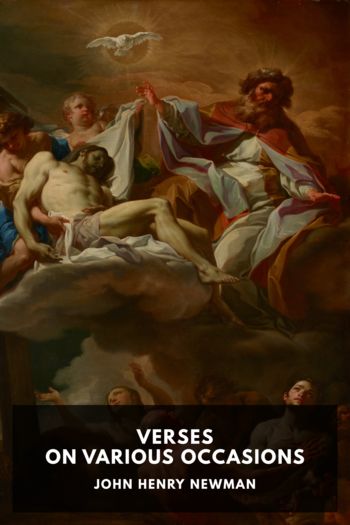Don Quixote Miguel de Cervantes Saavedra (mobile ebook reader .txt) 📖

- Author: Miguel de Cervantes Saavedra
Book online «Don Quixote Miguel de Cervantes Saavedra (mobile ebook reader .txt) 📖». Author Miguel de Cervantes Saavedra
Santiago y cierra España—the old Spanish war-cry. ↩
Hartzenbusch thinks something has dropped out here; some sort of explanation of the words by Don Quixote. ↩
I.e., of the descendants of Hagar. ↩
A sort of kirtle worn by the peasant women. ↩
Hartzenbusch protests that Cervantes can never have written this; but his pen undoubtedly does sometimes indulge in a flourish of the kind. ↩
The river that joins the Tagus at Aranjuez. The bull that Gazul encountered in the ballad, Esiando toda la Corte, was “nacido en la ribera del celebrado Jarama.” ↩
Cabestros, employed to lead the bulls when driven in from the pastures. ↩
The phrase in Spanish is not “bullfight” but “bull-run”—corrida de toros. ↩
Proverb 92. ↩
Condumio, meat dressed to be eaten with bread. ↩
Proverb 136. ↩
Proverb 145. ↩
Proverb 128. ↩
Avellaneda in Chapter II of his continuation makes Aldonza Lorenzo write to Don Quixote threatening him with a beating for calling her Princess and Dulcinea, and Don Quixote stung by her ingratitude resolves to look out for another mistress. ↩
In the first edition the passage runs, “con suavidad y sin hacerse fuerza alguna,” of which it is difficult to make sense. Hartzenbusch suggests “su vida” and “tuerto.” ↩
Proverb 164. ↩
Cervantes forgets that this blunder is of his own making. In Part I Chapter VII he calls Sancho’s wife “Juana Gutierrez,” and six lines afterwards “Mari Gutierrez,” and in Chapter LII “Juana Panza.” ↩
Proverbs 211 and 206. ↩
Hecho equis, i.e. with legs that show a tendency to form the letter X; a graphic description of a drunken man. ↩
In Chapter XI Avellaneda gives an account of Don Quixote’s tilting at the ring in the Coso at Saragossa, and so prolix and encumbered with details that his admirer M. Germond de Lavigne was forced to leave it out. ↩
Proverb 203. The words used by the page of Henry of Trastamara when he tripped up Pedro the Cruel as the two brothers were locked in the struggle that ended in the death of the latter. V. the ballad, Los Fieros Cuerpos Revueltos. ↩
The last lines of the fine ballad, A Cazar va Don Rodrigo, that tells how Mudarra avenged his brothers by slaying Rodrigo de Lara. (Cancionero, Antwerp, S.A. —Duran, No. 691.) ↩
Printed “Osiris” in the first edition. The Busiris, who with Memphian chivalry and perfidious hate pursued the sojourners of Goshen. —Paradise Lost, I 307 ↩
This Roque Guinart, properly Rochaquinarda, was a Catalan bandit who made some noise three or four years before this was written. He carried out the intention he expressed to Don Quixote, for he went to Naples in 1611 and seems to have died in peace there. He appears to have been a well-behaved freebooter, as Cervantes depicts him. ↩
Lladres, Catalan for thieves. ↩
Proverb 2. ↩
Reckoning by the dates of the letters written at the duke’s, St. John the Baptist’s day was past. Cervantes means the “Beheading of John the Baptist.” ↩
The Cadells and the Niarros were two Catalan clans, at feud at this time. ↩
Proverb 28. ↩
A dish composed of the breasts of fowls dressed with milk, sugar, and rice-flour. Don Antonio alludes to an incident in Avellaneda’s book. ↩
Proverb 236. ↩
Michael Escoto or Escotillo was a native of Parma, who had a great reputation in Flanders in the time of Alexander Farnese for his skill in judicial astrology, and was suspected of dealing in magic. Bowie absurdly confounds him with the more famous Michael Scot who flourished in the thirteenth century, though it is plain Cervantes is speaking of one who was his own contemporary. ↩
The dance referred to in Chapter XIX. ↩
Proverb 238. ↩
Perogrullo was a legendary personage who dealt in prophecies that were manifest truisms. Quevedo introduces him in the Visita de los Chistes. ↩
The translation of the Pastor Fido appeared in 1609. Cervantes had before this warmly praised Figueroa in the Viaje del Parnaso, notwithstanding which the year after his death Don Quixote and the Novelas were sneered at by Figueroa in his Pasagero, Madrid, 1617. There is no edition of Jáuregui’s Aminta known earlier than that of Seville 1618, so that this is a friendly advertisement. ↩
As Hartzenbusch points out, this leaves a margin altogether too narrow for the expenses. ↩
Luz del Alma, by Fr. Felipe Meneses, 1566. ↩
Avellaneda’s volume was called Segundo Tomo, not Second Part. It was hardly judicious in Cervantes to credit his enemy with a second edition, but he seems to lose his head whenever he thinks of Avellaneda and his insults; and from this on he apparently thinks of little else. From Chapter LIX to the end, indeed, there is a decided falling off. The story is at once hurried and spun out, and in the episodes of Claudia and Ana Félix he drops





Comments (0)